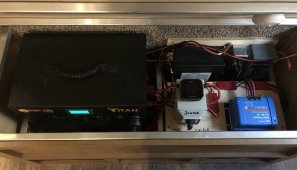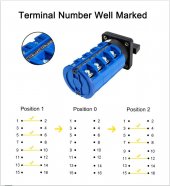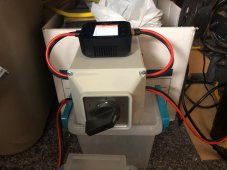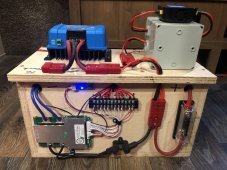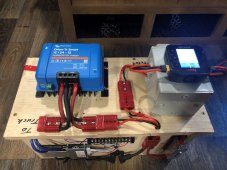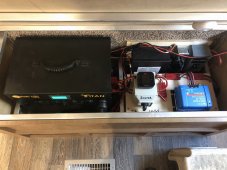Hello everyone
I recently purchased a Titan and have questions about the external battery port , I have tried to get some answers from Point Zero and found their answers short and not vary helpful, after alot of back and forth I know I can charge my 4 Lion energy safari batteries via the expansion port provided all batteries are the same 24 volts and within 0.5 volts of each other even if they are different chemistry than the Titan battery.
They also informed me that with the Lion energy batteries hooked up in conjunction with the Titan battery I can use the full 3000 watt output of the inverter (they require at least 2 batteries to get the 3000 watt output without damaging a single battery which I would prefer not buying)
What worries me now is that the Titan battery when topped off is 29.2 volts and I don't think the Lion energy batteries will charge that high in 24 volt configuration, and Point Zero said they ALL need to be within 0.5 volts, am I wrong, any suggestions?
Also I am wondering if I can just use the Lion energy batteries without the Titan battery hooked up because the chemistry lasts so much longer?
Any other pointers or experiences with the battery expansion port would be appreciated .
Thanks so much
Eddie
I recently purchased a Titan and have questions about the external battery port , I have tried to get some answers from Point Zero and found their answers short and not vary helpful, after alot of back and forth I know I can charge my 4 Lion energy safari batteries via the expansion port provided all batteries are the same 24 volts and within 0.5 volts of each other even if they are different chemistry than the Titan battery.
They also informed me that with the Lion energy batteries hooked up in conjunction with the Titan battery I can use the full 3000 watt output of the inverter (they require at least 2 batteries to get the 3000 watt output without damaging a single battery which I would prefer not buying)
What worries me now is that the Titan battery when topped off is 29.2 volts and I don't think the Lion energy batteries will charge that high in 24 volt configuration, and Point Zero said they ALL need to be within 0.5 volts, am I wrong, any suggestions?
Also I am wondering if I can just use the Lion energy batteries without the Titan battery hooked up because the chemistry lasts so much longer?
Any other pointers or experiences with the battery expansion port would be appreciated .
Thanks so much
Eddie



